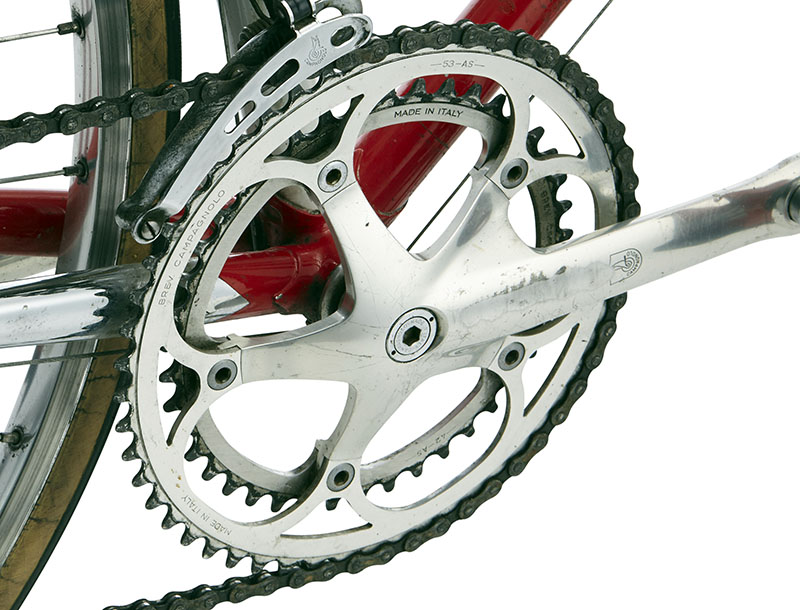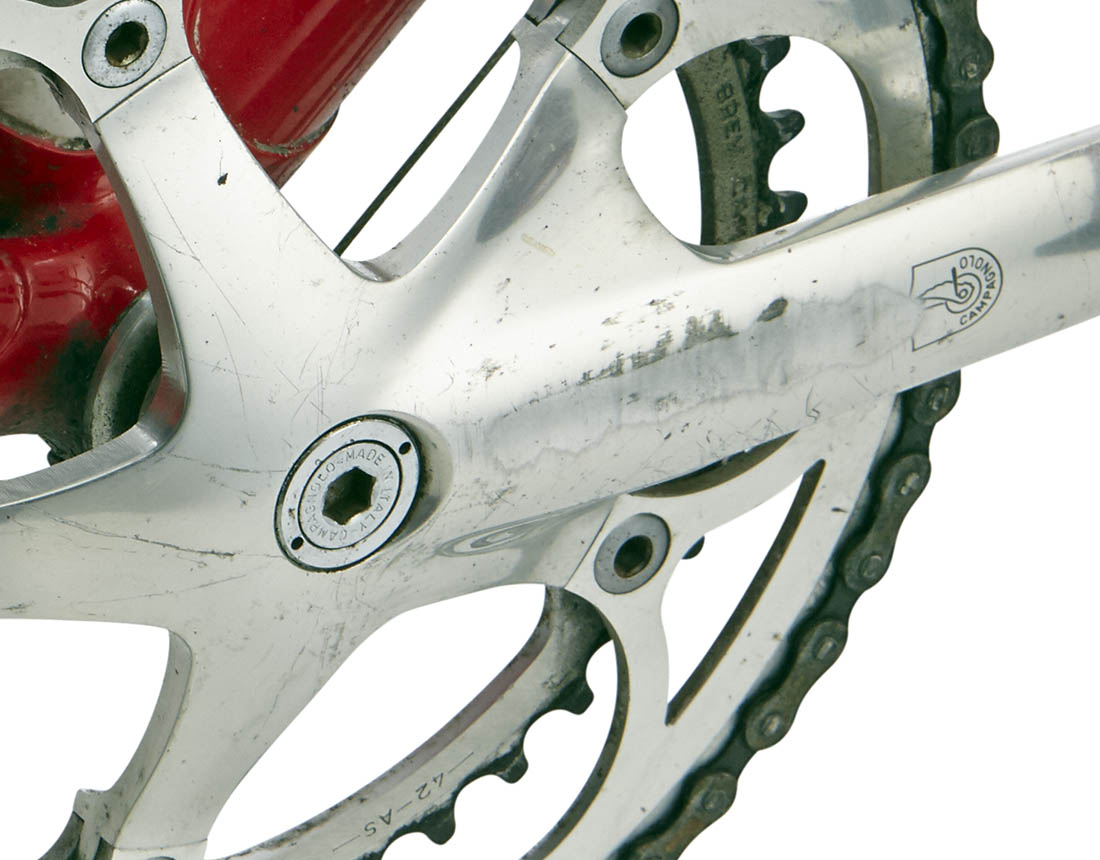Why René Herse Cranks Aren't Anodized

Sometimes, we get questions about why our René Herse cranks aren’t anodized. Some even wondered if this was a cost-saving measure. Rest assured, Compass never will choose a cheaper process over a better one. There is a reason why our cranks aren’t anodized:
When I was racing, I bought a beautiful used Campagnolo Croce d’Aune crankset (above). Named after the pass on which Tullio Campagnolo suffered from frozen fingers and no longer could open the wingnuts of his rear wheel to change gears, the Croce d’Aune group was second only to the C-Record in the Campagnolo lineup. They were a smart design and beautifully made.
The cranks had very few miles on them, as witnessed by the (then) almost-new chainrings. Even so, I paid very little for the cranks – because they had lost some of their beauty. The previous owner’s ankles had rubbed against the crankarms and worn through the anodizing. You can see it between the Campagnolo logo and the crank extractor bolt.

It wasn’t a functional problem, and since they went on a bike that I was racing hard, I didn’t care too much about the cosmetics. In fact, I soon added to that “polish” with my own ankles. The rough life of racing led to more scratches over the next few years.
And yet: if the cranks had just been polished, instead of anodized, the buffing from the rider’s ankles wouldn’t have disfigured the cranks. Even the scratches would have been easy to polish out. Polishing out scratches isn’t just about aesthetics: It allows checking whether a scratch really is a scratch, or whether it’s a crack that might cause the crankarm to break. Of course, you can polish out a scratch on an anodized crank, too, but doing so removes the anodizing, and then the crank doesn’t look good any longer.
So why do some component makers anodize their cranks? High-strength aluminum tends to corrode. Different from steel, where the corrosion flakes off until the part is gone, aluminum oxide forms a protective layer that prevents further oxidation. But it means that the aluminum turns gray. Anodizing forms a hard oxide layer that protects the alloy. Clear anodizing means that the aluminum won’t tarnish. But if the anodizing wears off in one place, the part looks worse than if it hadn’t been anodized in the first place. That is why it only makes sense to anodize components that won’t get scratched.

René Herse never anodized his cranks. The cranks on this 1952 bike still look nice after many thousands of miles. If you ride these cranks in the rain, use a high-quality car wax to protect them. That is what we do on the modern Compass René Herse cranks when we assemble them. Reapply the wax once or twice a year, and your cranks will look as nice as these, even after 65 years of hard use.

We don’t anodize our crankarms, but the chainrings are anodized. Why? They are made from 7075 aluminum for the ultimate in wear resistance. 7075 aluminum contains zinc as its main alloying agent. It oxidizes much more readily than other aluminum alloys. Without anodizing, the chainrings soon would develop ugly spots. And since your ankles (hopefully) won’t rub on the chainrings, there is little risk of wearing through the anodizing.
It would be easy to anodize our René Herse crankarms, and it would make them easier to sell, because anodizing still is taken as a sign of quality. But we prefer crankarms that we can polish and restore to “as good as new” condition, no matter how hard they have been used. Because we fully expect you to ride our cranks for many decades, just like René Herse’s riders did with their original cranks.
Click here for more information about Compass René Herse cranks.


